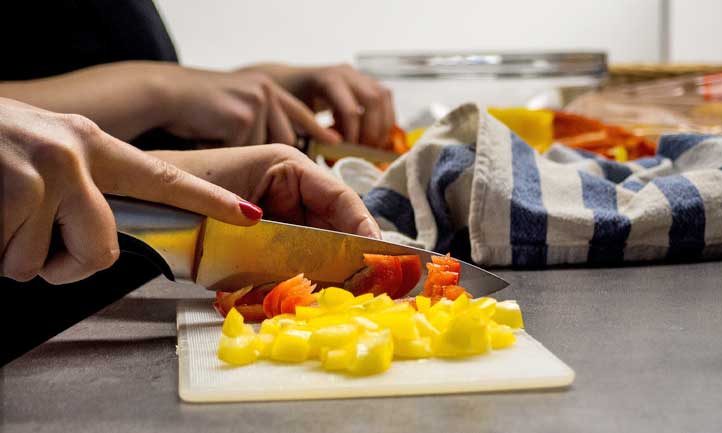Finding My Winter Wellness
Author: Rayanne Hunter
I love that feeling of fall shifting into winter! Cool mornings, crisp days, winter hats, scarves, and soon, snowboarding. The world is growing quiet and shimmering all over. Inviting us to move inward — to find that which makes us warm and cozy. Being from Colorado, the beautiful frost and snow encompassing everything is something that I enjoy.
I know there also comes a shadowy side to the winter season, especially when we are grieving. That weight — the quiet isolation, and potentially overwhelming holiday expectations can be difficult to find our way through, causing stress, anxiety, and depression.


As the temperatures drop and I see signs of seasons changing all around me, I have found creating a mindful routine for my physical and emotional wellness helps me find more ease. I, personally, can struggle greatly in this love/hate relationship with routine. Every fiber of my being wants to rebel against it, yet every day I manage to have some sort of routine present. Sometimes it’s hard to fit in self-care. Seemingly small things are taken for granted or not thought of as practices. But what happens when we give them a little more purpose and attention?
I have had a year full of transitions, letting go, embracing the new (or at least reacquainting with a former) relationship with my roots. Due to many of those often difficult dates we face while grieving, I tend to fall off the face of the earth at the end of summer going into fall. I have had a yoga practice turn into meditation, turn to just quiet time reading. An ebb and flow of practice I sometimes adjust daily to keep my sanity, despite what is going on around me.
Having moments of mindfulness, caring for oneself, being grateful, allowing things to just be even for a moment at a time can have lasting impacts. Scientific research continuously validates the benefits of mind-body practices in activating your parasympathetic nervous system and in reducing stress that has accumulated — typically combining the benefits of physical fitness, strength, flexibility, posture, chronic pain relief, increased energy, improved sleep, heart health, immune system function, and mental and emotional balance. Sometimes trying new, enjoyable, beneficial activities is a welcome, healthy distraction from all the heavy within the season. No matter how small, it can bring hope of a new day to share our story and our lives with those around us — a moment to connect and feel grateful.


Creating a Wellness Routine
In creating a winter wellness routine, one of the first things I look at are what sorts of challenges are coming up that I may have to work around. Having different options can take the stress off a routine when it doesn’t seem available. If nothing else, it gives us the chance to let go of what just does not work in that moment and be softer with ourselves. Connecting with our own inner teacher gives us tools to find a healthy balance. I am hoping this basic guide will inspire you to get creative in building your own practice to help lift your spirits and energy levels. Many of these practices help people begin to unplug from working within the conscious mind in order to navigate reality from a different, almost outside perspective, leaving us refreshed, recharged, energized, and thinking clearly.
I always look to my yoga practice first as my way of balancing. Regularly taking the time to release stress through a yoga practice allows you to feel less anxiety, depression, and stress off the mat and into the rest of your week.
Meditation is useful either with or without a yoga practice. Many people can find meditating quite difficult. Everyone experiences what is referred to as the “monkey mind.” Meditating is more about being aware of that chaos, acknowledging it, and coming back to your breath.
If just focusing on your breath is still a challenge, you can try a guided meditation or more of a somatic awareness type of practice — focusing on the thoughts in your head, your feelings, emotions, moods in your heart, and finally sensations within your entire body. Becoming aware, connecting, and getting curious about where things feel different and where the breath goes, helps bring you into the present moment.
Self massage also brings a meditative and therapeutic aspect to a daily practice. All that’s needed is some massage oil or lotion that you enjoy best, then truly feel and appreciate your body for all it does for you every day.
Breath work can be brought into any part of your day, bringing more energy or calmness:
❄ Try inhaling for a count of three.
❄ Follow the breath in your nose, down the back of the throat, into the lungs, expanding into all parts of the chest and filling the abdomen to your hips.
❄ Pause at the top of your inhale for up to a count of three.
❄ Exhale a count of three following the breath out of the body in reverse from hips, to chest, and out the nose or mouth.
❄ Pause again at the bottom of the exhale for up to three counts.
❄ Continue for a few breaths or a few minutes until you feel centered.


Dance parties are such a good way to release pent-up emotions. Dancing not only brings movement to your body, but relaxation, energy, and more joy into your day.
Journaling can provide a cathartic way to release anything that is stuck, be it a gratitude journal, a daily review of events, a dream journal, short stories, or even nonsense and nothings floating around through your head.
Arts and crafts are other creative outlets that can make wonderful practices, helping process grief, stress, anxiety, and depression in a new way.
Food plays a big role in our health and wellness. I look to balance what I’m eating, awareness of what my body actually wants or needs, and how it feels after eating — even into the next day. Get as much fresh food as possible, stay hydrated, enjoy the atmosphere while eating, and love what you’re eating. We can naturally gravitate toward foods that help each season. For winter, think warm drinks, stews, soups, dark greens, warming foods, and spices.
Connection and socialization of some sort — whether sports or workout classes, women’s or men’s circles, church groups, grief groups, or clubs — may not be a daily routine, but they are still an important aspect of a good mental health practice.
Get out into nature. This one can make a huge difference in your mood, but it tends to be neglected during the colder months. I’m not saying this has to be an excessive amount of time; it can be as simple as going for a walk or playing in the snow. Five minutes of feeling the fresh air and, potentially, the sun. When you’re done, you will have the bonus of getting all cozy afterward with something warm to drink!
Play, however that may come, as long as it’s something you enjoy. As adults, I feel it sadly becomes underrated, but play can be exactly what your day needs.
Listen to your favorite music to fit your mood or desired mood. Get lost in the sounds, vibrations, singing, and you can also work in one of the dance parties I mentioned for added benefit.
Find a way to give back, volunteer, or share in some way a kindness. Looking outside of ourselves to others can help us feel lighter in our own struggle. Be sure you show some of that kindness to yourself! The smallest win throughout the day, or even the courage to face it at all, definitely warrants some love.
Sleep and rest are so important! During the winter months you may find yourself needing even more of it, and that’s perfectly fine! If sleep is something you struggle with, there are many things here that can help, but also so many other resources available. Guided meditations, breathing exercises, yoga/yoga Nidra (literally yogic sleep) are available, so try different things and find what works for you. Also, a rest or restorative day can lift the spirits, recharge the body, help prevent burnout, and allow for things to fully integrate into your awareness.
Finally, get help and guidance whenever you need it — teachers in various practices, mental health practitioners, coaches, family, and friends. Knowing when you need an outside perspective or help is one of the best ways to honor your well-being!
Remember that your wellness practices only require you to show up, in whatever form. It can be a way to find meaning and purpose to assist transforming your grief into a more hopeful experience. By including something that your loved one enjoyed or viewed as important, you can honor them, grieve, and heal all at once. All of these practices are a way of becoming more present, feeling, and giving love to oneself. It is in no way exhaustive, but hopefully these ideas spark your imagination and help you bring presence into your everyday. Play with it, change it up, rejuvenate, look after your wonderful self, and keep warm!
Rayanne Hunter is a mind-body nutrition coach and yoga instructor specializing in grief, anxiety, and posttraumatic stress. She is the surviving spouse of U.S. Army Staff Sergeant Wesley Hunter and a member of the Advisory Board for Tragedy Assistance Program for Survivors.
Photos: Pixabay.com, Pexels.com and Unsplash.com
